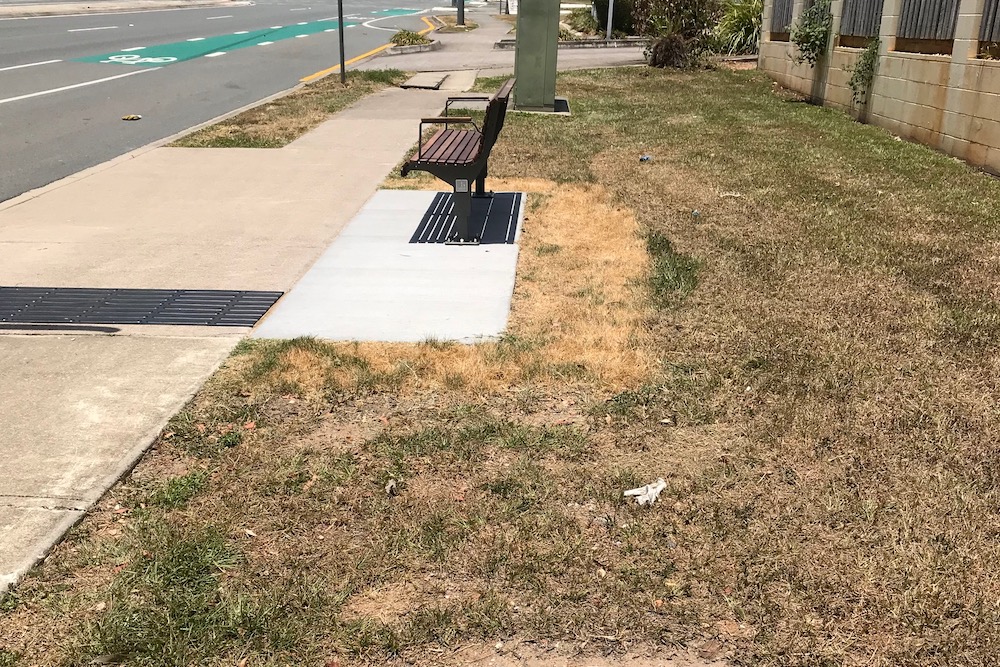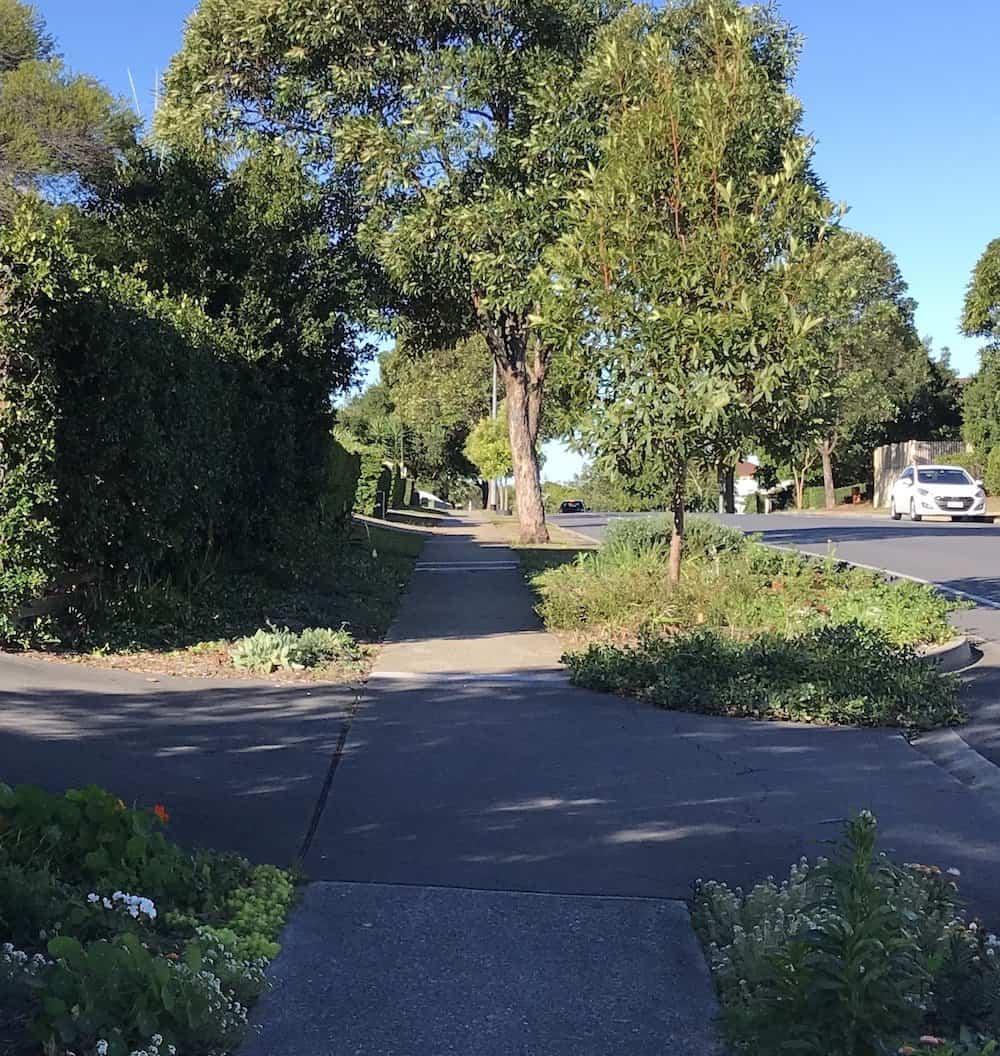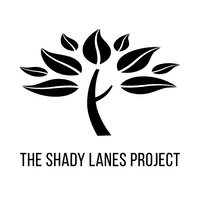
This is my local bus stop at the side of a major road in a supposedly leafy suburb. People wait for the bus in hot sun. Nothing grows well, the ground is hard and compacted.
Our cities are getting hotter with some suburbs predicted to be unliveable within a decade – unless we change.
Lining our streets with street trees, underplanted with low-growing native plants, is an important first step toward cooling our cities and suburbs.
Converting from grass to garden beds also means that emissions from mowing equipment, and methane from lawn clippings going to landfill, will be reduced.
(If you must have a lawn, convert to an electric mower and either put the clippings in your compost or worm farm or leave them to break down and feed your lawn.)
Develop better to preserve existing greenspace.
So let’s protect current greenfield sites and move towards homes with smaller footprints and maximise the shared greenspace – common property in apartment and townhouse complexes and the public land along our streets.
Retrofit existing streets
While we quite rightly invest in making sure new developments are done well, the reality is that most of us live on in established suburbs and streets. We have to start where we are – and make it better.
For existing residents, simple transformation of their grass verges costs them little, saves ongoing fuel costs, and combined with council-planted street trees cools their streets and homes.
Through this process, existing residents will be exposed to ideas about how and why new estates are designed differently. This may reduce nimbyism and other friction between existing residents and urban planners.
Put simply – plant everywhere we can – and plant it well.

This is a much cooler place to walk. Where would you rather be?
